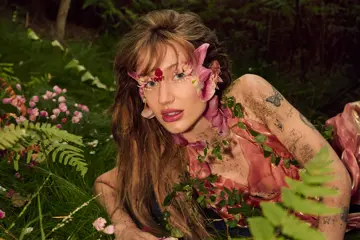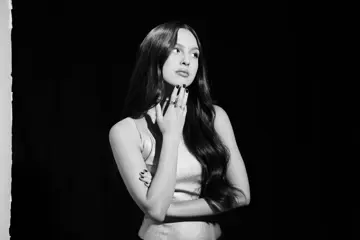“I's perhaps some kind of event, maybe memories of an event. It's the feelings that are made after something happens,” Jed Rowe muses, trying to explain why he named his recent album The Ember And The Afterglow. “I've had people take it in a sexual way. It's an open-ended title that leaves the listener to draw their own meanings. Hopefully it makes you feel something if you hear it?” he asks, and while not keen to give away the Freudian workings of the inner mind of this hack, I give vague assurances that it does – but don't ask me to do the Rorschach test.
Encouraged, Rowe conspiratorially confesses, “I came up with the name when I was driving in to the studio one morning to do some recording, and I drove past a van on the freeway that had the name 'Afterglow Heating' or something like that painted on the side. I read that, then my mind made a jump and next thing I had this phrase.”
Perhaps the title is somehow alluding to the slow creative simmer, and last minute spark, that formed the album: Rowe has been stewing some of these songs since even before his last release. “Some songs were written in the two years since we released our last album, and some are even older than that. Others are based on ideas I've had floating around for close to ten years or something close to that, and there are also a couple that got written in the week or two before we went into the studio to record – Looking Through The Devil's Window and Wonder Why You Hide.”
So, what would Freud have thought of there being five tracks written by Rowe from the perspective of a woman? Rowe says it wasn't some kind of self-set challenge or intellectual exercise.
“There are five songs written from a woman's perspective and a couple of songs to do with childbirth. It's mostly imagined characters or drawn from people I know. Little short stories, if you like. We wrote about 30 songs and sent them to our producer Jeff Lang to choose what he thought were the strongest. He took them on a plane journey to Europe, and listened to them on his iPod, told us which he thought were the 15 strongest and we added a couple and whittled it down from there,” Rowe laughs.
Don't miss a beat with our FREE daily newsletter
Whilst Rowe doesn't view this album as a diary or confessional, becoming a father in the recent past certainly hasn't hurt his interest in or empathy towards his creative subjects.
“I never really write music with a preconceived idea in mind,” he explains, “but I've got a couple of kids who are relatively young, so I've just been through the whole journey of childbirth in the last few years myself. That definitely provides a bit of empathy for what that situation is like for a woman. Other than that it's a bit of a mystery – even to me – as to why I write about certain things.”
Recorded live in the studio, The Ember And The Afterglow makes an easy transition to the stage for their live show, particularly in comparison to their last album, which took six months in the studio and countless tweaks and overdubs.
“Being recorded pretty much live and in a short space of time, I think there might be more immediacy to this album -– hopefully there's a 'here and now' raw energy to it. What you get on the album is pretty close to what we do live, although we're unfortunately not travelling around with a string quartet, and we don't have Jeff (Lang) or Liz (Stringer, album guest) at every show. Also, there's a fair bit of room for us to improvise and keep the songs fresh, and we've been doing that every night.”















